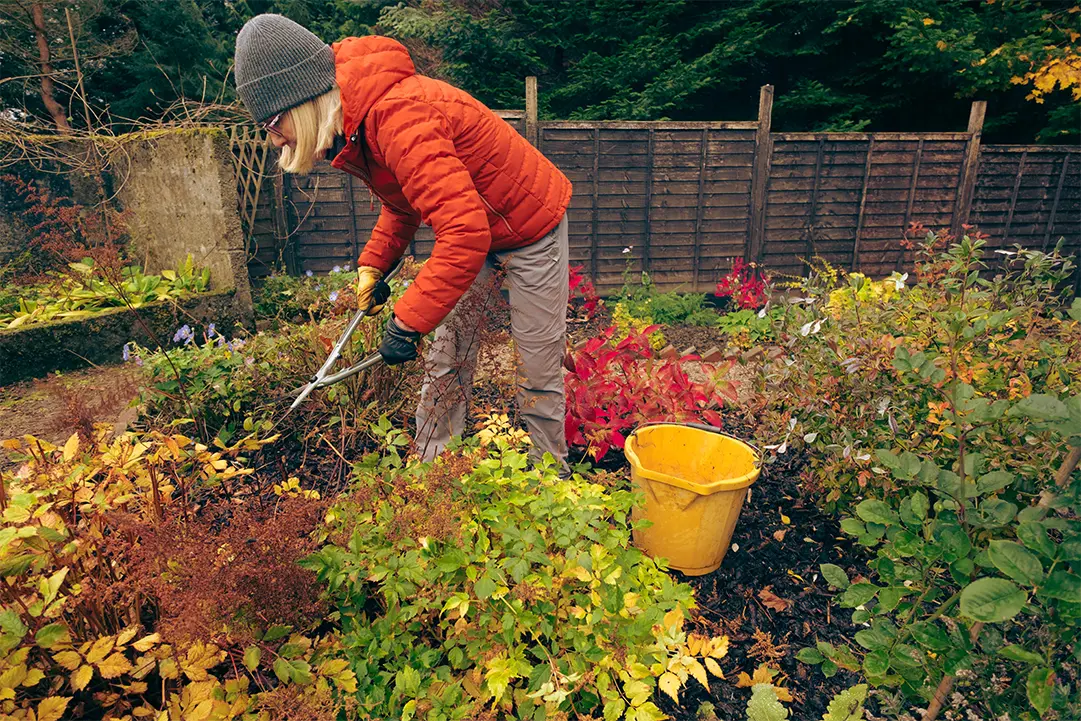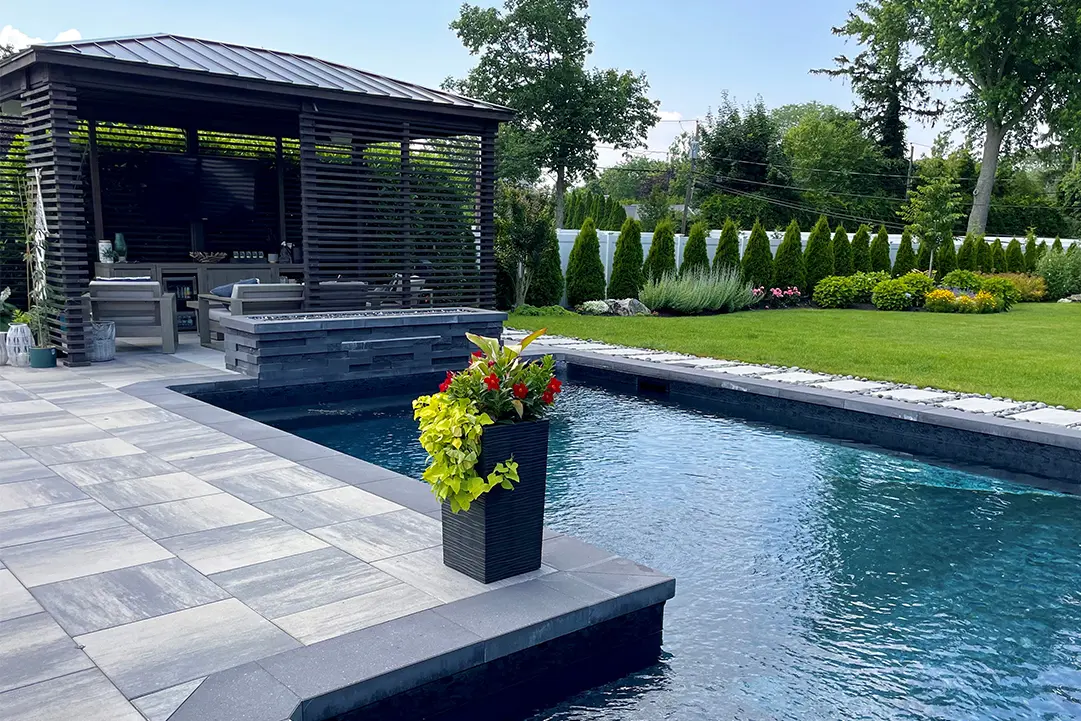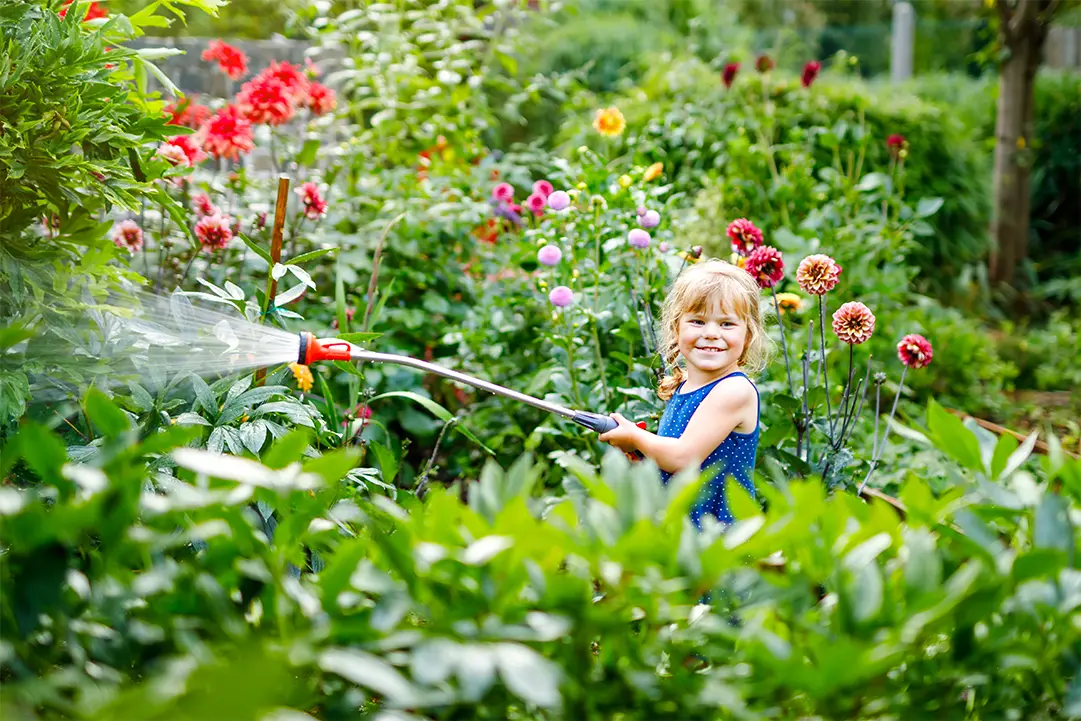When the last leaves fall, it can feel like your landscape goes quiet. The color fades, perennials retreat, and lawns lose that summer lushness. But this in-between stretch — after fall’s show and before winter’s stillness — is one of the most important times to act. What you do now will shape how your landscape looks, grows, and thrives come spring.
Late fall is the time to protect, strengthen, and even reimagine your outdoor space while the weather is still cooperative. Here’s how to approach the post-foliage season with purpose.
Classic Fall Cleanup
Most homeowners associate leaf cleanup with tidiness. But it really has more to do with long-term plant and soil health than aesthetics. When leaves and spent plant material sit through winter, they trap moisture, block light from reaching turf, and create a protected layer where fungi and pests can overwinter. By spring, that can translate into patchy lawn areas, weak perennials, and soil that struggles to warm and drain properly.
Alongside leaf cleanup, it’s also important to reset planting beds and give perennials a clean transition into dormancy. Cutting back faded growth, removing annuals and seasonal containers, and thinning out crowded areas keeps root systems healthy and reduces the chance of disease carrying over into next season. Beds that go into winter clean tend to green up faster and more evenly once warmer weather returns.
You’ll also want to clear out low spots where wet leaves collect, check that downspouts and drains are unobstructed, and shake excess foliage out of evergreen shrubs. These small steps quietly set the stage for a stronger, healthier landscape when spring arrives.
Soil and Plant Health
Once the beds are clear, your landscape’s foundation — the soil — deserves some attention. Late fall is an ideal time to assess soil health and make targeted improvements that work through winter. Soil testing helps identify nutrient deficiencies that may have developed over the growing season. Addressing those issues before dormancy gives plants a head start when growth resumes. A slow-release fertilizer or organic compost blend can replenish nutrients without overstimulating top growth this late in the year.
Aeration is another overlooked step that pays off. Opening compacted soil improves oxygen flow and allows roots to strengthen before the freeze. This also helps prevent water from pooling on the surface when snow melts, reducing the risk of ice buildup and root rot.
High Tech’s Integrated Plant Health Care Systems (IPHCS) division focuses on this exact process — evaluating root zones, soil structure, and nutrient balance. Through targeted treatments and soil amendments, IPHCS helps homeowners and property managers create the conditions for healthy spring growth while reducing the need for reactive treatments later.
Finally, consider mulching before winter sets in. A fresh, even layer of mulch helps regulate soil temperature, prevents heaving from freeze–thaw cycles, and retains moisture in root zones. Just don’t pile it against tree trunks or plant crowns; air circulation is still important even in cold months.
Trees, Shrubs, and Perennials
Winter brings harsh winds, heavy snow, and fluctuating temperatures that stress even hardy plants. Taking protective steps now can prevent damage that might not show until months later.
Begin with pruning, but only where it’s appropriate. Dead or diseased wood should always be removed, but major structural pruning is best saved for late winter or early spring, depending on the species. Over-pruning now can expose tender growth to cold injury.
Next, focus on protection. Burlap wraps or anti-desiccant sprays can shield evergreens and broadleaf shrubs from winter burn caused by wind and sun exposure. Young trees benefit from staking or wrapping to guard against snow load, ice, and animal browsing. Deer repellents can also be useful as natural food sources dwindle.
Perennials that have died back can either be cut to the ground or left for winter interest, depending on the plant type and your aesthetic preferences. Leaving ornamental grasses and seed heads intact adds texture and movement to an otherwise bare landscape (and provides food and shelter for birds).
Design, Lighting, and Winter Interest
With the landscape cleared and prepped, late fall naturally becomes a planning season. Once the visual distractions of lush foliage are gone, you can clearly see the structure of your property and the bones that define its layout, balance, and flow.
For homeowners considering new projects, this is the best time to start. Design work, budgeting, and permitting all take time. Starting now means you can break ground as soon as spring conditions allow. Whether it’s a new patio, walkway, retaining wall, or outdoor kitchen, High Tech Landscapes will develop a detailed plan through the winter months, so installation is ready to roll once temperatures rise.
Lighting is another popular investment for the off-season. As days shorten, outdoor lighting enhances both safety and curb appeal. Pathway lights, uplighting for trees, and accent illumination for architecture create depth and warmth, especially when paired with evergreen plantings or decorative hardscape elements.
Winter interest doesn’t have to rely on blooms. Ornamental grasses, conifers, red-twig dogwoods, and textured bark trees add life and contrast against snow. Even containers can be repurposed with winter greens and branches for a simple seasonal touch. Our experts can help you choose and arrange these elements to keep your landscape engaging year-round.
Commercial and HOA Considerations
For property managers, the period after fall foliage is a logistical turning point. Snow and ice management become priorities, but the underlying landscape still needs attention to avoid damage and downtime in spring.
Clearing leaves from parking lots and drainage areas keeps melting snow from creating slippery conditions or flooding walkways. Trimming low branches and removing weak limbs reduces liability from storm breakage. Mulching and winterizing shared plant beds protect valuable assets that enhance community appeal.
High Tech’s commercial maintenance programs bridge this transition seamlessly. Our teams provide comprehensive landscape maintenance, ensuring continuity throughout the year. That means fewer contractors to coordinate, more consistent communication, and a landscape that stays in good condition from season to season.
Even beyond the practicalities, winter is also when next year’s contracts, budgets, and site improvements can be mapped out. Reviewing what worked and what didn’t this past season helps refine priorities for spring, whether it’s upgrading irrigation, refreshing entrances, or replanting high-traffic areas.
From Dormancy Comes Opportunity
When trees go bare and lawns turn quiet, it’s tempting to think the landscape season is over. In reality, this is when the groundwork for next year’s success begins. Late fall is about preparation, preservation, and planning as opposed to pausing.
At High Tech Landscapes, we’ve built our approach on a year-round mindset. So, while the color may be gone, your landscape’s story continues. With the right attention now, you’ll step into spring ready to enjoy a landscape that’s not just revived, but improved. Ready to get started? Contact us today!




